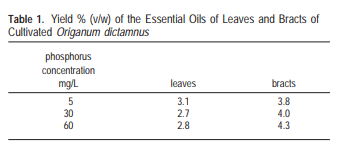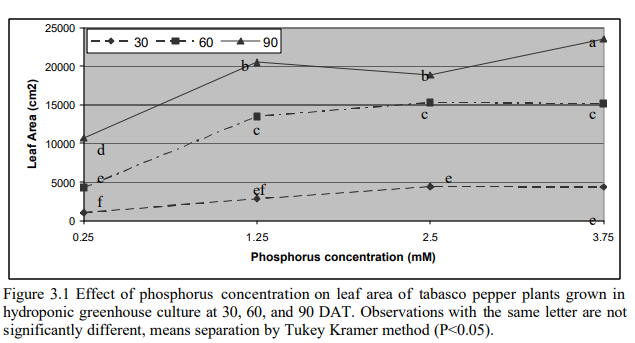If you searched for the optimal P concentration for plant growth in hydroponics you will likely find very different results, ranging from low values to very high values. This is inherently contradictory and difficult to understand, why don’t we have a smaller range for optimal P conditions? Why has it been so hard to describe what the best P levels are? Today we will talk about P nutrition and why there has been so much confusion regarding optimal P levels in hydroponic culture.

Almost all books about hydroponics and flowering plants will put optimal P concentrations in solution between 20 and 50 ppm, rarely will you find any book recommending P levels outside of these values in general, since these are recognized to be safe and they play well with standard nutrient concentrations used for other elements. However you will find articles for different plants recommending P levels that can be as high as 200 ppm to as low as 10 ppm. Take for example this article on Calendula, which recommend a P application of 10ppm, while this article on Lavender suggests 60ppm. Note that optimal P might also depend on the desired result as this article on Origanum dictamnus shows that there is a movements of essential oils from leaves to bracts at higher P concentrations in these plants.
Not only is there confusion about optimal P levels, but even the effects of P and the interaction of P with micronutrients are not very well understood. There is evidence (see here) that P promotes Mn uptake in tomatoes while it suppresses Fe and Zn uptake, while we have entirely different results in barley, where P is found to actually impede manganese acquisition. The above two articles also give a lot of references to P uptake literature, which I suggest you checkout if you would like to learn more.


The P literature is quite extensive (I suggest you read this thesis and its references if you would like to get a deeper dive), but overall we know that concentrations below 20ppm are rarely optimal and we do know that levels above 60ppm can be optimal for some plants under some conditions. In the thesis mentioned above we can see that tabasco pepper plants have the highest leaf area after 90 days in a P solution at almost 120 ppm.
Optimal P levels are perhaps harder to evaluate because they depend substantially on the concentration of other elements in solution as well as solution pH and root zone temperatures. We know that lower P stimulates root growth and reduces shoot growth while higher P levels have the exact opposite effect. Therefore variations in the ratio of P to other nutrients might be the optimal path for many crops but this is very hard to generalize as it depends on the particular growing conditions of each particular crop being grown.
Sadly the answer is that we don’t have an “optimal P” that will match all growing conditions and plants. We know that growing with a P value between 30-50ppm will give you decent results on almost all crops, but we also know that there are substantial gains to be made by optimizing P under your particular growing conditions (plant, media, tempeatures, etc). In some cases 50%+ increases in yields might be possible if P is properly tuned to the exact growing conditions used.
Your optimal P might be way lower or higher than what’s recommended in the literature, so start with the ballpark literature recommendation and make experiments from there to properly adjust P to maximize yields in your crop. Also make sure you carry out leaf-tissue, media and run-off analysis while you do this to ensure you get the best possible results.





2 Comments